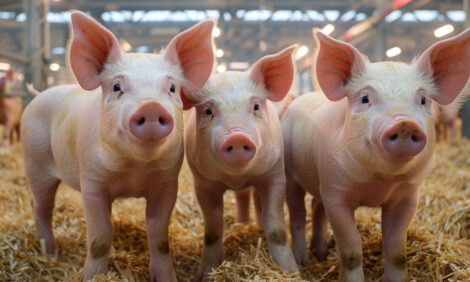



What we learned from PED applies to COVID-19
Swine veterinarians and producers may feel déjà vu when they hear about the coronavirus disease 2019 (COVID-19) epidemic in the US. Seven years ago, they battled a different coronavirus - porcine epidemic diarrhoea (PED). Just like COVID-19, it spread quickly.“We know how frustrating coronaviruses can be,” reported Laura Bruner, DVM, Swine Vet Center (SVC), St. Peter, Minnesota. “They are pretty hardy. When they have a naïve population to move through like PED did, it moves very rapidly.
“As the pork industry faced PED, we implemented a lot of biosecurity steps - washing more market trucks, limiting movements, more testing,” she explained. “We really improved our biosecurity, especially at the market level.”
The strategy to prevent COVID-19 infections is similar. Bruner advises everyone to follow the Centers for Disease Control and Prevention (CDC) recommendations for personal hygiene including frequent hand washing, limiting movement, staying home if sick and disinfecting the workplace.
In addition, the SVC office is taking workplace disinfection to a new level. “We are starting to fog our clinic with a product that kills microbes on contact. Just in case someone is sick, we can knock down that virus,” Bruner said.
She believes following the CDC guidelines in a hog facility will reduce COVID-19 infections in farm employees.
“I think you can function within a farm by using really good hygiene; even if one person gets sick, not everyone has to get sick,” she added.
Limiting contact in hog units
Some producers have changed work schedules to reduce contact between workers and limit the chance of a farm-wide outbreak.
“We’ve had some farms activate split shifts,” Bruner said. “Their crews are either split into a morning shift and afternoon shift or one half works three days and the other half works the next three days.
“If farms have not activated these shifts, they should limit contact between workers by staggering start times and breaks,” she added. “They also need to use social distancing on the job, like processing across from each other instead of next to each other.”
Contingency plans for dire situations
In the event of a COVID-19 outbreak at a client’s farm, the SVC veterinarians won’t be caught unprepared.
“Every week we have conference calls on what we need to think about for our clients; and every week we talk with our producers,” Bruner said.
They discuss contingency plans for everything from short staff at a farm to a processor shutdown.
Bruner says their biggest worry is a processor shutting down due to a worker shortage. She recommends everyone develop a plan to be prepared just in case it happens.
“Think of all the scenarios if you lost a week of marketing,” she explained. “It ends up being a double hit because you send in heavy pigs and it costs to feed them. So, what will be your plan for feeding those pigs differently at market end?”
If animal movement gets halted for a period of time, it is good to think through where the flow of pigs will go. Bruner says if space is available, it is possible to utilise nursery and farrowing to hold weaned pigs. But if you are tight, you may need to use the space in wean-to-finish barns. Identifying those now will help to handle this crisis if it occurs.
Short-staff planning
The other important contingency plan is for short staffing. “If we have multiple people who get sick, most times we have others come in to help, but that is not always possible,” Bruner said.
“We are asking producers if you normally have maybe nine people but only five are available, what are the tasks you need to do every day like feed, water, iron shots? We need to narrow the list to things you know you need to get done.
“We haven’t had a short staff yet, but we go through the concept with producers of what they need to do,” she added.
As the COVID-19 epidemic works its way through the country, Bruner believes people will learn from it and next year will be better.
“Just like with PED, we will have less coronavirus cases next year because people are recognising how well these personal hygiene steps limit the spread of coronavirus,” she added.
More COVID-19 resources
For more information on ways to reduce the threat of COVID-19 in your hog operation, visit these websites:








